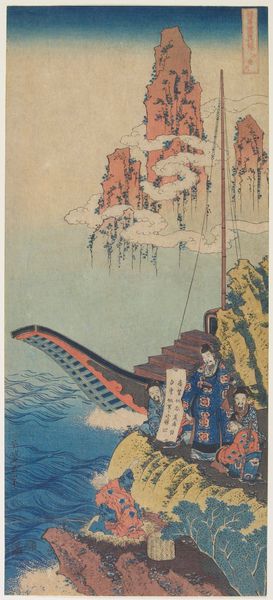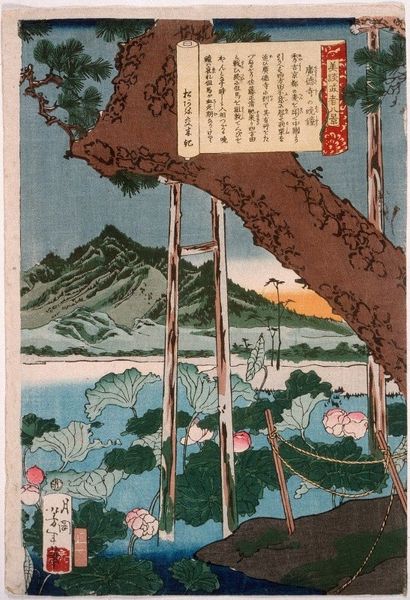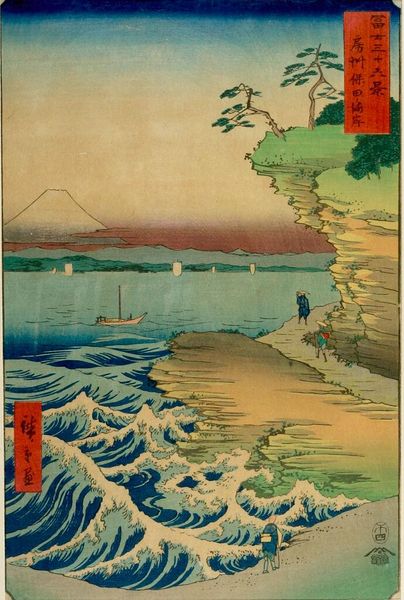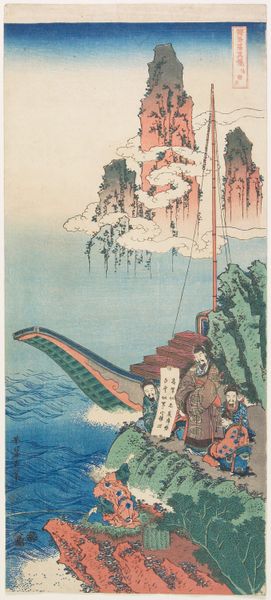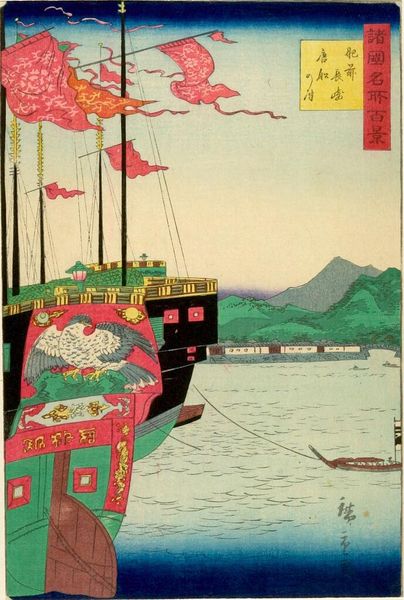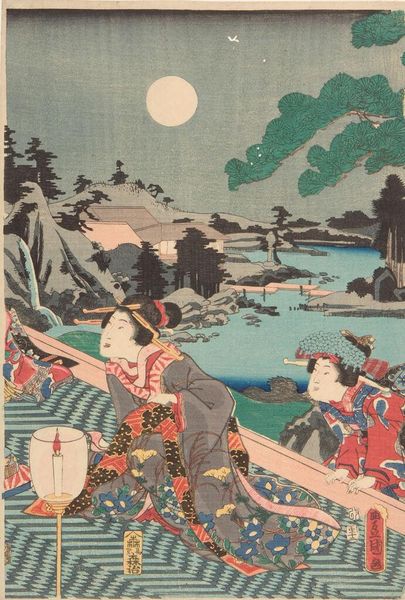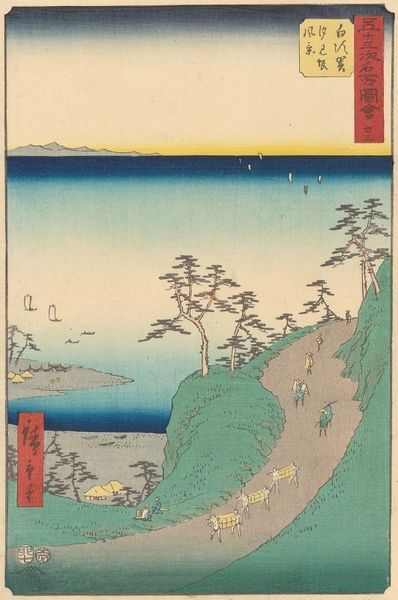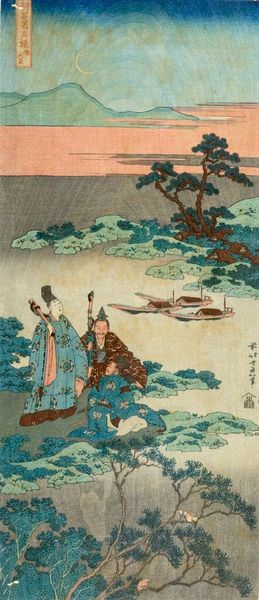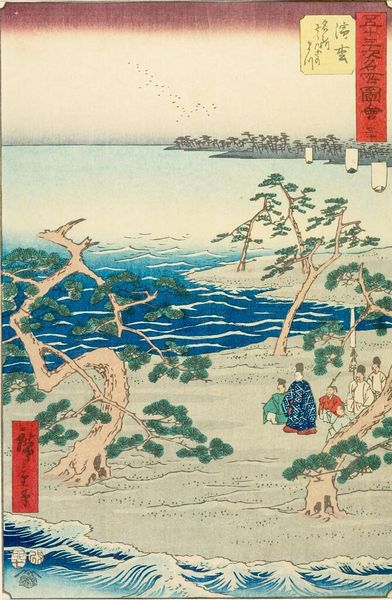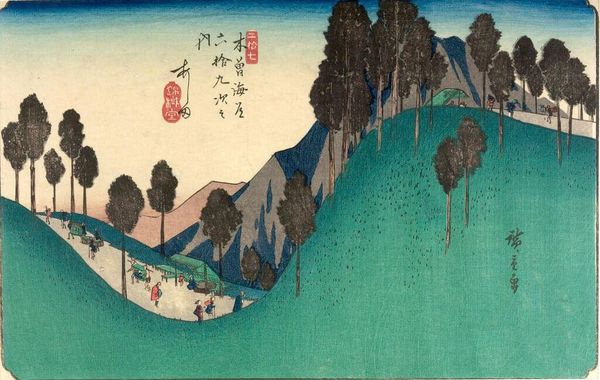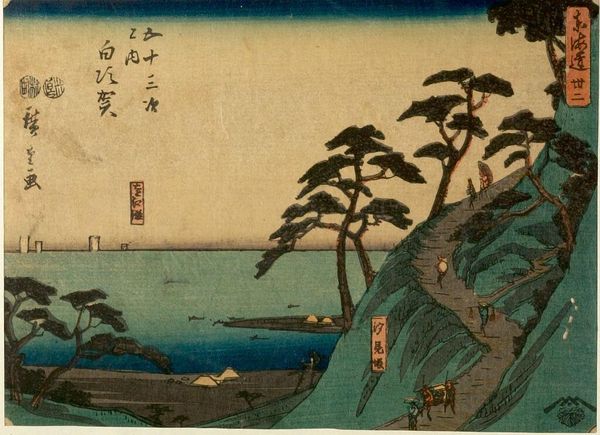
Bai Juyi (Hakurakuten), from the series A True Mirror of Chinese and Japanese Poetry (Shika shashin kyÅ) c. 1833
0:00
0:00
Copyright: CC0 1.0
Editor: This is Hokusai's "Bai Juyi (Hakurakuten)" from the series "A True Mirror of Chinese and Japanese Poetry." It depicts figures on a boat with fantastical rock formations in the background. What socio-political narratives do you think Hokusai is engaging with here? Curator: Hokusai, living during a time of strict social hierarchies, often critiqued the elite through his art. How might this woodblock print, depicting a revered Chinese poet, Bai Juyi, be a commentary on Japan's own literati class and their relationship to artistic and intellectual traditions? Editor: So, the choice of a Chinese subject is itself a form of social commentary? Curator: Precisely! Consider how Hokusai uses the romanticized landscape to perhaps subtly question the authority and self-importance often associated with scholarly pursuits. The fantastical setting also speaks to a yearning for escape from rigid social structures. Editor: That's a fascinating perspective. I hadn't considered the landscape as a form of social critique. Curator: Art can act as a form of activism, either directly or indirectly. Exploring the social context of art opens up new possibilities for interpreting its meaning. Editor: I will keep that in mind as I continue my studies. Thanks!
Comments
No comments
Be the first to comment and join the conversation on the ultimate creative platform.
